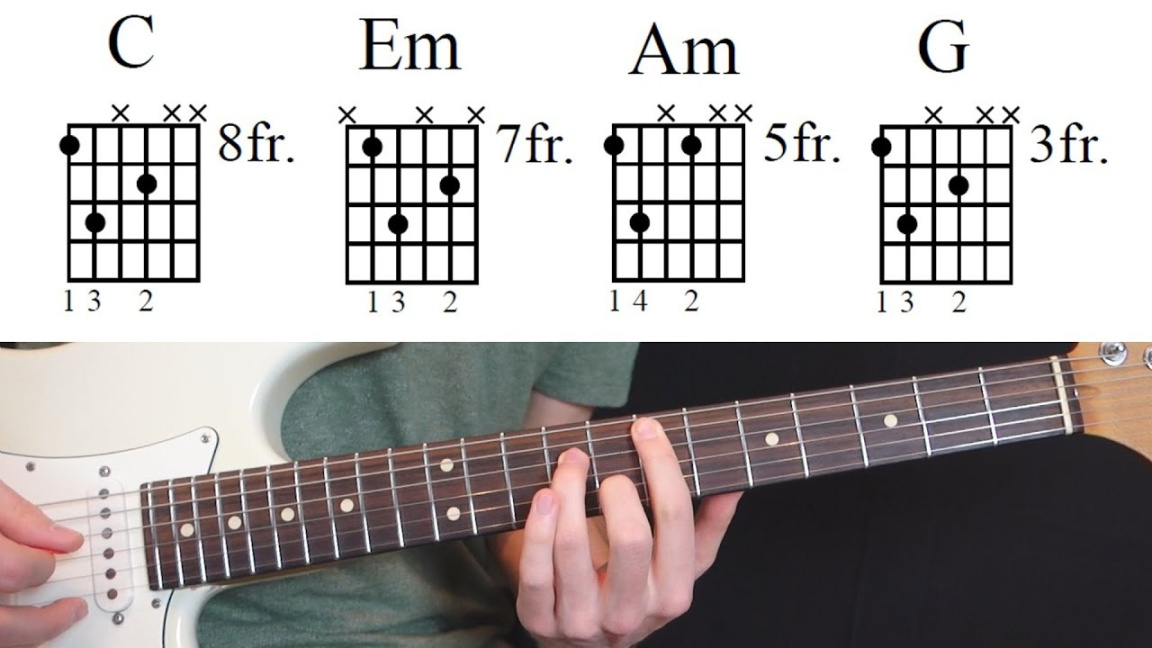Article Title: Drifting Soundscapes: Mastering Ambient Guitar Chord Progressions
—
Ambient music, with its ethereal textures and immersive soundscapes, often relies heavily on simple yet effective chord progressions. For guitarists, this genre offers a fantastic playground to explore sonic possibilities and create truly captivating pieces. Let’s dive into the world of ambient guitar chord progressions, exploring techniques, common patterns, and how to craft your own drifting soundscapes.
Understanding the Essence of Ambient Chord Progressions

Ambient music isn’t about virtuosity or complex harmonies. It’s about creating a sense of space, atmosphere, and emotion. Think slow, sustained chords, gentle arpeggios, and a focus on texture rather than rhythmic complexity. When it comes to chord progressions, simplicity is key.
Common Chord Choices for Ambient Guitar
Major and Minor Chords: These are the foundation of most music, and ambient is no exception. Major chords evoke feelings of openness and light, while minor chords bring a sense of melancholy or introspection. Experiment with variations like major 7ths, minor 7ths, and suspended chords to add depth.
Building Ambient Chord Progressions
Focus on Slow Transitions
Ambient music is all about creating a sense of flow. Avoid abrupt changes between chords. Instead, aim for smooth, gradual transitions. This can be achieved through techniques like:
Arpeggios: Playing the notes of a chord individually, rather than strumming them all at once, creates a delicate, shimmering effect.
Embrace Repetition and Minimalism
Ambient music often relies on repetition to create a hypnotic effect. Don’t be afraid to repeat a simple chord progression for extended periods. This allows the listener to become immersed in the soundscape.
Experiment with Textures and Effects
The guitar’s tone is just as important as the chords themselves. Experiment with different effects pedals to create unique textures:
Reverb: A generous amount of reverb is essential for creating a sense of space and depth.
Common Ambient Chord Progressions
Here are a few common chord progressions that work well for ambient guitar:
I – IV – V – I: A classic progression that can be made ambient by using seventh chords and slow transitions. For example, $Am7 – Dm7 – Em7 – Am7$.
Creating Your Own Ambient Soundscapes
Start by experimenting with different chord voicings and inversions. Find a few chords that sound good together and try playing them in different orders. Don’t be afraid to experiment with different tempos and rhythms.
Recording and Production
Once you have a chord progression you like, try recording it. Experiment with different microphone placements and signal processing techniques. Use a DAW (Digital Audio Workstation) to add effects and create a polished sound.
The Power of Dynamics
Ambient music thrives on subtle dynamic shifts. Avoid playing everything at the same volume. Use volume swells and gentle changes in intensity to create a sense of movement and depth.
Listening and Learning
Listen to a wide range of ambient music to get inspiration. Pay attention to the chord progressions, textures, and effects that different artists use.
Letting the Music Breathe
Space between chords is crucial. Allow your chords to ring out and decay naturally. Don’t feel the need to fill every moment with sound.
The Importance of a Drone
A drone, a sustained note or chord, can add a powerful sense of grounding to your ambient soundscapes. Experiment with drones in the bass register to create a deep, resonant foundation.
Using Arpeggiators and Delays
Arpeggiators and delays can create complex rhythmic patterns from simple chord progressions. Experiment with different settings to create unique textures.
Experimenting with Open Tunings
Open tunings can create unique sonic possibilities and make it easier to play sustained chords and drones.
Conclusion
Creating ambient guitar chord progressions is a journey of exploration and experimentation. There are no hard and fast rules, so don’t be afraid to try new things and develop your own unique sound. By focusing on simplicity, texture, and dynamics, you can create truly captivating soundscapes that will transport your listeners to another world. Remember to listen, learn, and most importantly, enjoy the process. Ambient music is about creating a space for reflection and immersion, so let your creativity guide you and let the sounds flow.

